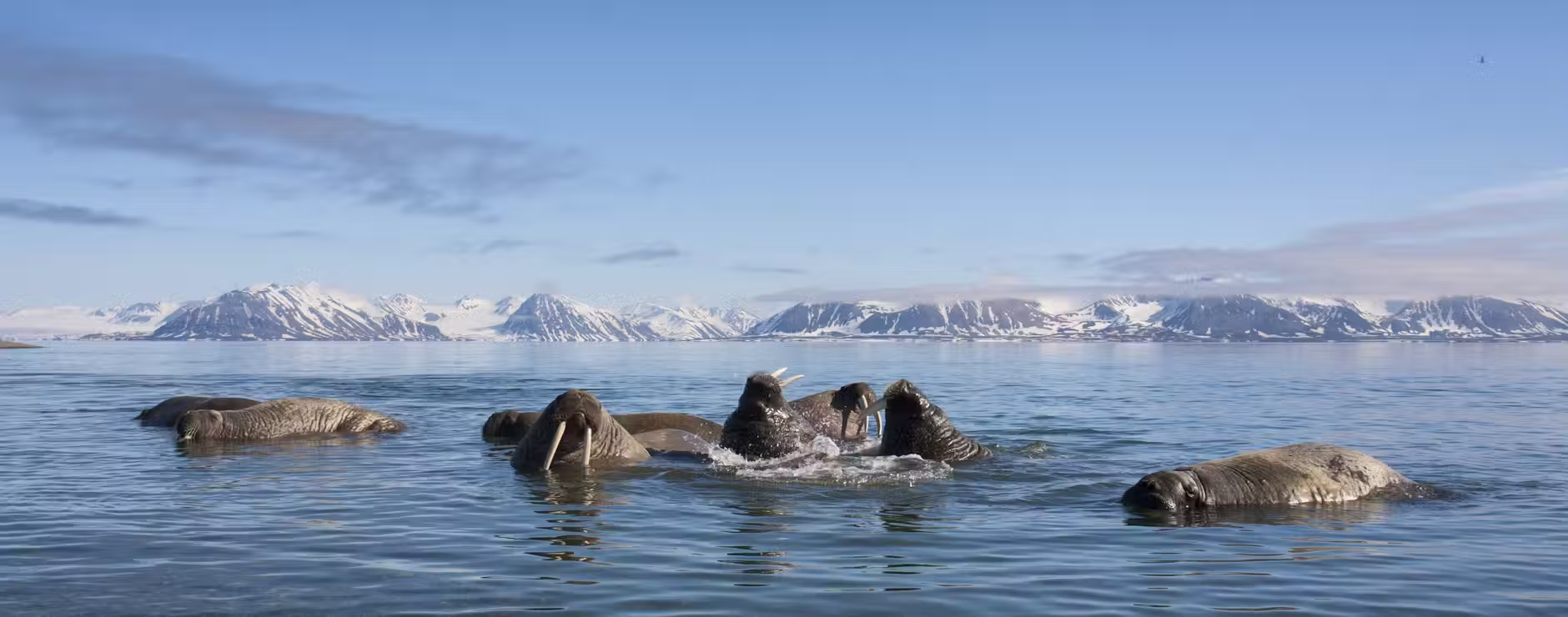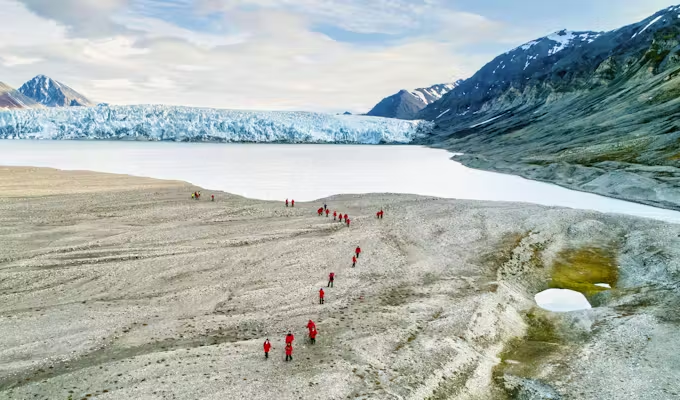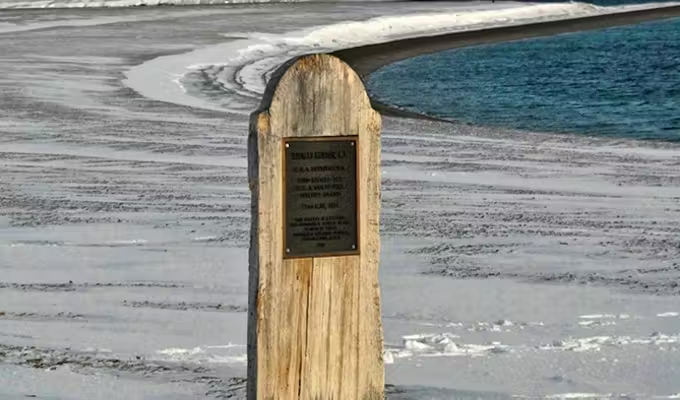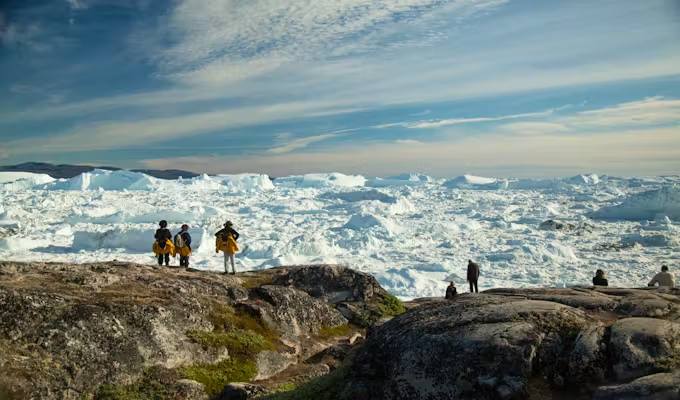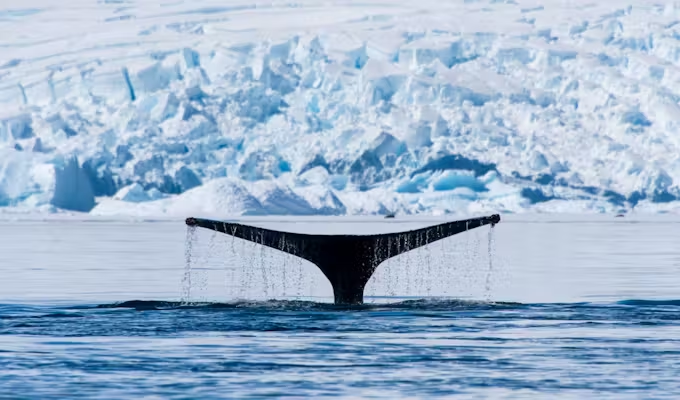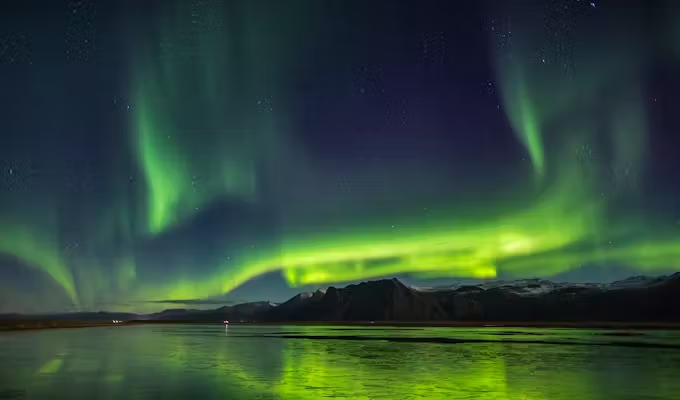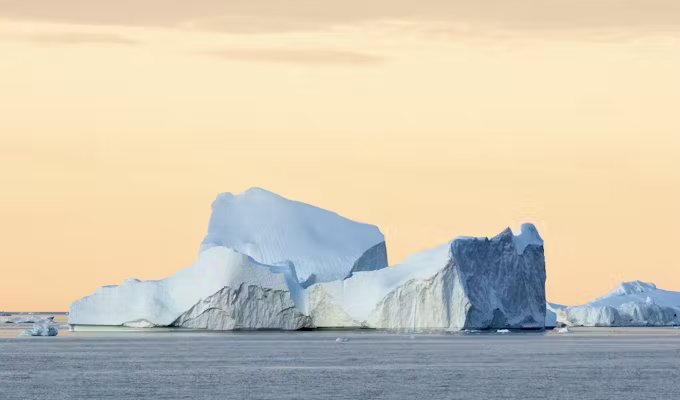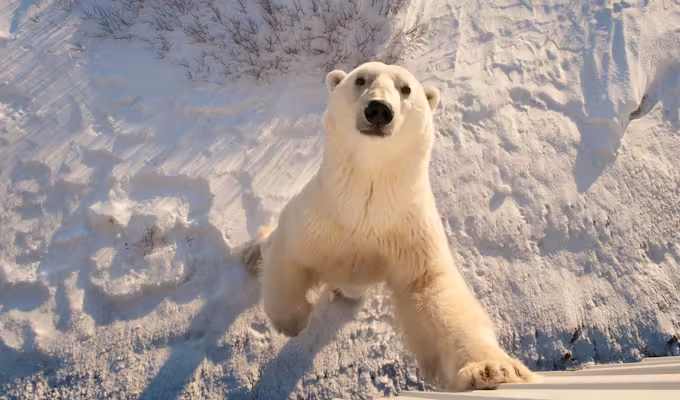Our most popular Arctic trips
Special Offers:Swoop has access to the widest range of offers and can help you find the right trip, cabin, & price.
Polar Bears
Undoubtedly the King of the Arctic, the mighty polar bear (Ursus maritimus) is a large mammal, growing up to 2.7m long and 720kg in weight. Their thick insulating fur, which even grows on the bottom of their paws, allows them to camouflage with the snow, whereas their skin is black, to allow for better absorption of the heat from the sun.
Typically, males are solitary, and are often territorial and aggressive, whereas females will live with their young for up to 28 months, spending time to teach the young important survival skills. In Churchill, we have the opportunity to get up close and personal with the mighty bear in large tundra buggies, giving us the opportunity for that once-in-a-lifetime photo shoot.
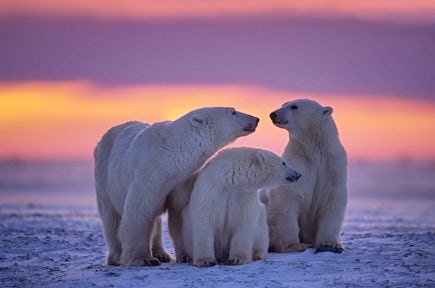
Land-based Mammals
Arctic Fox
Otherwise known as Vulpes lagopus, this small, omnivorous land mammal has adapted to the far North, with the ability to survive frigid temperatures as low as -50 degrees Celsius. It can be found in North Canada, Greenland, Iceland, Svalbard and Russia making its appearance on your trip highly likely.
They can often be seen tunnelling into snow to create burrows and shelter. Its seasonal blue/grey fur allows for superb winter camouflage, and evasion from its predators.
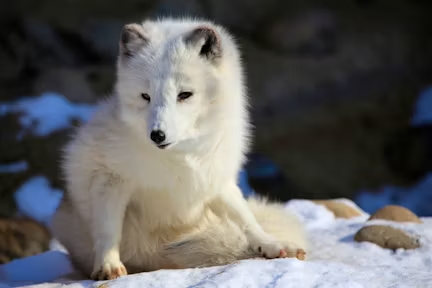
Reindeer
The reindeer is an Arctic tundra mammal, which is found largely in Svalbard and some areas of the Canadian and Russian Arctic. Their meat and warm pelts make them important domesticated animals for many Arctic peoples.
Contrary to popular belief, both males and females have antlers, with the bull of the herd usually boasting the largest.
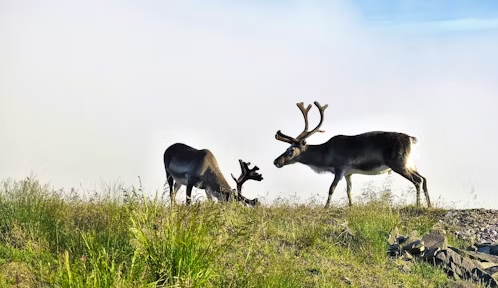
Musk Ox
Noted for its thick coat and stocky stature, the Musk Oxen is common in the Canadian Arctic and Greenland. The average ox stands at about 1.5m tall and can weigh anywhere from 180–410kg, depending on season and age. They are able to run up to 37mph and can live up to 20 years.
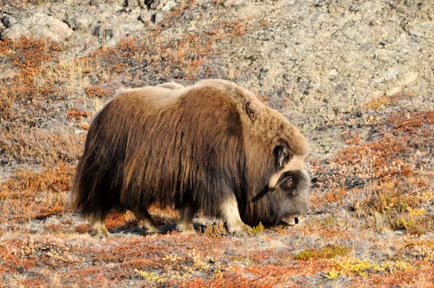
Arctic Hare
This small mammal lives in the Canadian tundra. Unlike other mammals similar to the Arctic hare, it does not hibernate, but instead adapts both physiologically and behaviourally to the seasons in order to survive the deep cold of the Arctic winter.
They sometimes dig shelters where they can gather to conserve heat, and in winter they can be seen gnawing on wood, mosses, and lichens for nutrition. During the summer months, they prefer to eat berries and plant roots.
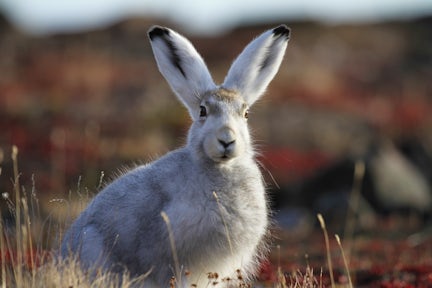

Swoop says
The numerous regions which make up The Arctic each have differing fauna and so the area you choose to visit, either on a cruise or on a land excursion, will dictate the wildlife you're likely to see.
What our customers think of Arctic Animals & Wildlife
Walrus & Seals
Walrus
The Atlantic Walrus is present in the Canadian Arctic, Greenland and Svalbard, while the Pacific sub species is found from the Bering Sea to the East Siberian Seas. This iconic Arctic mammal is instantly recognised by its long and curved tusks which can grow up to a metre long and weigh 5kg.
Brown in colour, Walrus can appear white after diving, or even pink when they are warm due to a variation in their blood supply to the periphery of their body under different circumstances.
.jpg?auto=format,enhance,compress&fit=crop&crop=entropy,faces,focalpoint&w=0&h=288&q=60)
Bearded Seal
The bearded seal is a medium-sized earless seal, well known for its dull brown colour and big bushy beard. Large beasts, they can grow between 2.1-2.7m long and can range from 200 to 430 kg in weight. It is hardly surprising therefore, that a bearded seal can have a body fat content of up to 40%!
They also make for a major food source to both polar bears and Inuit people on the Arctic coasts. Their skins are also traditionally used to make shoes, dog sled harnesses and in the construction of summer tents.
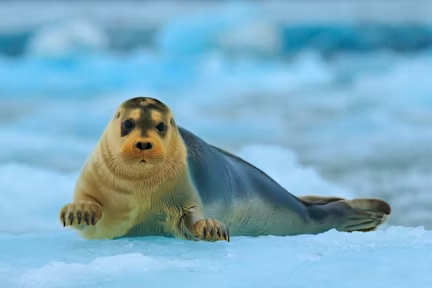
Ringed Seal
The great Phoca hispida is the most common seal throughout the Northern hemisphere and feed largely on arctic cod and crustaceans. The ringed seal is also the smallest seal, growing up to a maximum of 1.65m and up to 70kg in weight - a similar size to most humans.
They live in colonies and spend most of their time near shore ice but are physiologically adapted such that they can dive up to 90m deep for up to 45 minutes. They also tend to blow bubbles before they reach the surface, to evade their number one predator, polar bears.
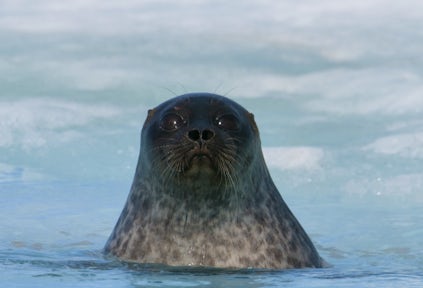
A ringed seal in Arctic waters
Whales
Bowhead
Measuring up to a gigantic 15–18 metres and over 100,000kg in weight, the Bowhead is an incredibly powerful sea beast. As if to prove this, they use their large heads and powerful bodies to break through sea ice at least 20cm thick, with some reports of bowheads breaking through ice up to 60cm thick!
The key identification marker of this species is its large symmetrical skull, which composes 30% of its body length, and paired blowholes. In addition, Bowhead whales don't have dorsal fins.
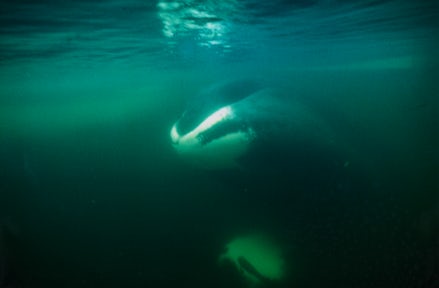
Narwhal
The narwhal is a porpoise found in Arctic coastal waters and, occasionally, rivers. They have two teeth, with the prominent tooth growing through the upper lip up to 2.7 metres long in the male. This presents itself as the large horn that makes narwhal so memorable.
These 'Unicorns of the Sea' are largely carnivorous, feeding on fish, shrimp, squid and other aquatic wildlife. They also congregate in groups, spanning anywhere from 15 to several thousand and these groups are sometimes hunted by Inuit people for their tusks and skin.
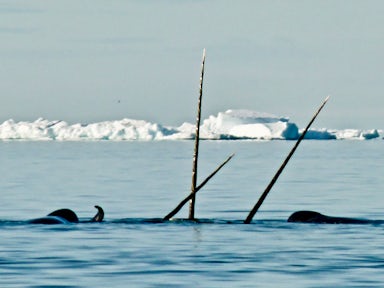
Narwhal tusks break the surface in the Canadian Arctic
Humpback
With flippers up to 30% of its total body length, the humpback truly is the king of the sea. Each individual has a unique white pattern on the underside of its belly and they can weigh anywhere between 25.4 and 35.5 tonnes. Lengthwise, they measure between 11–19 metres, with males generally being smaller than females.
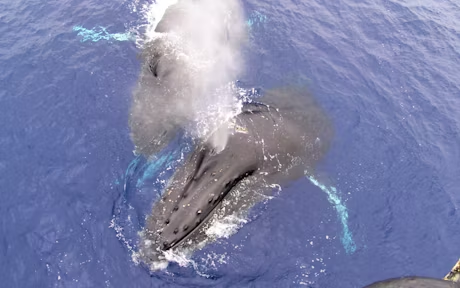
Beluga
The Beluga's bright white appearance make them easily distinguishable to the keen whale spotter. Unlike most whales, the beluga whale has a flexible neck which allows it to turn its head in all directions. They are very sociable animals, and live together in small groups.
Beluga whales, given to their small size, are often prey for polar bears and killer whales.
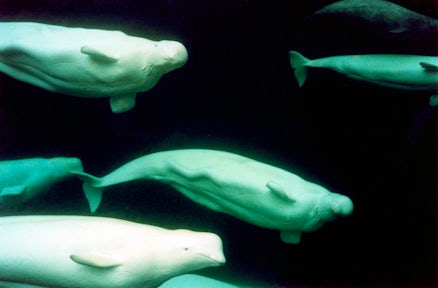
Arctic Birds
Brunnich's Guillemot
Brunnich's Guillemots can be found congregating in large colonies on the bird cliffs of Alkefjellet, Svalbard. The adult bird can grow up to 41cm and up to 1.2kg.
The Brunnich's bill is also shorter and thicker than the common guillemot. The bird's call is similar to a growl.
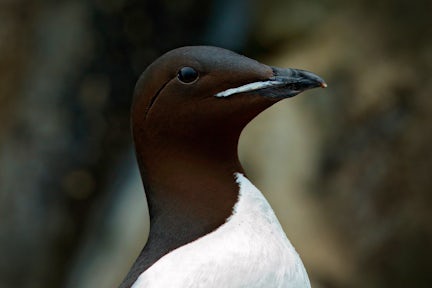
Ready to Book Your Arctic Adventure?
1. Listen
We'll spend some time listening to your aspirations, then discuss the kind of experience that might suit you.
2. Match
Next we'll discuss the options, shortlist the best trips for you and present you our impartial recommendations.
3. Reserve
We'll place a 24 hour hold on your preferred option - without obligation - whilst we talk through the details.

